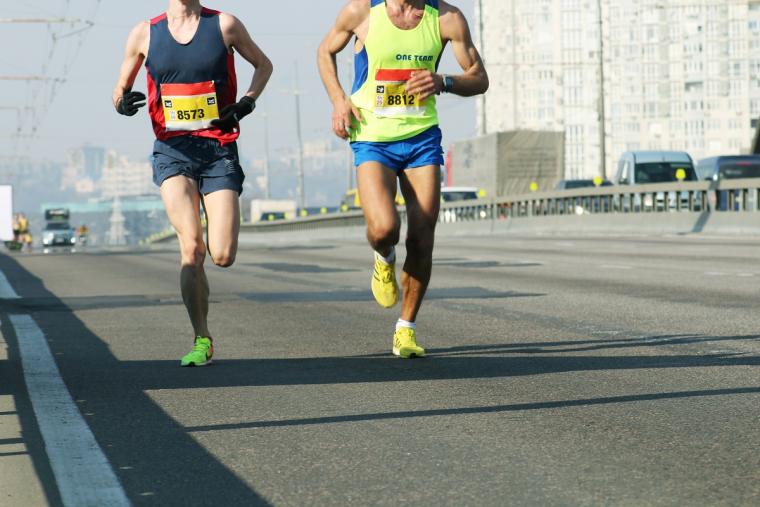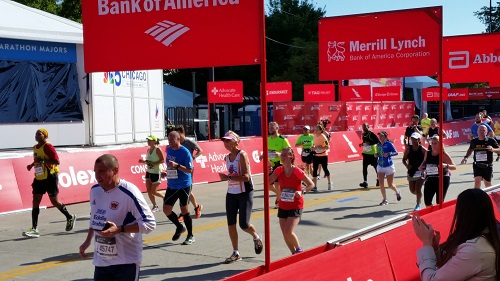
Photo © Karenr | Dreamstime.com
Distance runners are not hustling back to the road race circuit in the wake of the pandemic. RunnersWorld.com recently cited several 2022 events in which the number of finishers has dropped precipitously:
The BAA 10K in June had 5,144 finishers, down from 8,003 in 2019, a decrease of 35 percent.
The Utica Boilermaker 15K in July had 5,848 finishers, which was up from 2021, when it had 3,480, but down from the 2019 tally of 11,194, for a three-year decrease of 47 percent.
In Colorado, the Cherry Creek Sneak, a 5K, 5-miler, and 10-miler in Denver, had its final running in 2022 after 40 years. Combined participation in the three events had already been falling before the pandemic, and it fell an additional 38 percent between 2019 and 2022 (from 3,390 finishers to 2,092).
Larger, well-known events haven’t been immune from the declines. The Cherry Blossom Ten Mile Run in April in Washington, D.C., had 2,700 fewer runners, for a decline of 15 percent.
The Falmouth Road Race in Massachusetts and the Beach to Beacon 10K in Cape Elizabeth, Maine, two popular destination summer road races, saw declines of 24 percent and 16 percent, respectively. The town of Falmouth reduced the field size of the race to 10,000 runners this year (from its usual 12,800) but only 8,610 finishers appear in the results.

The website offered four theories for why the numbers are lower than expectations. They include the economy, competing events, lingering COVID concerns and shifting priorities after races in some communities have been canceled the past two years.
“We are seeing a slow recovery in 2022, and we are tracking with participation data showing about 84 percent return,” Jean Knaack, chief executive officer of the Road Runners Club of America, told RunnersWorld.com via email in September, adding that “I think inflation will be a factor for 2023 as events plan and people pick what events they can afford to run.”
The trend toward lower participation in road racing can be traced back several years before the pandemic, according to RunRepeat.com, which in 2019 teamed with World Athletics (then known as the International Amateur Athletic Federation) to provide what it called the “first mapping of global running participation” from 1986 to 2018. Event participation peaked in 2016 with 9.1 million runners crossing the finish line, as determined by “The State of Running 2019.” Between 2016 and 2018, participation fell by 13 percent, and runners were the slowest they’d been in decades.
Perhaps running’s push for diversity in recent years is needed now more than ever.
For example, the Boston Athletic Association (B.A.A.), which oversees the Boston Marathon, launched the Boston Running Collaborative earlier this year to broaden access to the sport across the Greater Boston area. And while the Boston Marathon does not collect data on race participants beyond age, gender and hometown, that could change, according to WGBH.org — which notes that “it’s an open question for how many Black or African American athletes compete each year.”
“We have only just started to track data specific to other demographics and will use it to inform our work going forward,” a spokesperson from the B.A.A. told the radio station.
That kind of demographic data is critical, according to Carolyn Su, creator of the @DiverseWeRun Instagram account. “There have been so many run groups, race expos and races where I show up and it’s clear by body language alone whether they’re comfortable with me being there and whether I’m seen,” Su told RunnersWorld.com in 2020. “That’s something to take note of in your running group. If you’re a leader or a race director, it starts with you. You set the tone.”
Several minority athletes (BIPCO, LGBTQ+ and disabled individuals) who responded to a Gatorade Endurance survey about barriers they face when participating in endurance sports, cited fear of becoming a hate-crime victim when training.
“I’ve talked to a lot of Black men and women who have said they’re hesitant to train due to safety concerns, or the fact that they don’t necessarily see people who look like them, or don’t have family members who’ve expressed interest in participating in these activities,” Kira West, a Chicago-based fitness influencer and marathoner, told WomensRunning.com last year. “When I was training for my first marathon, I was super-cognizant of when I was running and had different safety measures that I put in place even until race day. I definitely had a fear that there were certain areas where I might be profiled and made sure I ran routes that were well populated and that I wasn’t wearing things like hoods or hats to make sure I had the most appealing appearance so that there wasn’t any confusion as to why I was there or what I was doing.”
“Running is really a microcosm of a larger society. So even though it should be all welcoming and inclusive, it’s not,” Tiffany Chenault, a runner and sociology professor at Salem State University who focuses on the lack of Black athletes in recreation running, told WGBH.org. “The academic in me was looking at literature, pop culture literature, academic literature on Black women running. And I found hardly anything.”
“When you’re talking about equity, you’re talking about changing systems and structures that, in this case, center whiteness,” Allison Désir, co-chair of the Running Industry Diversity Coalition, told RunnersWorld.com. The coalition strives to unite the running industry to improve inclusion, visibility and access for Black, Indigenous and people of color (BIPOC).
As RunnersWorld.com writes:
In discussions with running brands, individuals, and retailers, Désir has found white-centering systems at the leadership level and within the running industry’s talent pipelines. She pointed out that young runners of color are often filtered from running so they don’t end up participating in cross country during middle school and high school. That lack of mentorship and retention toward BIPOC athletes excludes them from the running industry later in life, particularly at the C-suite level, where leadership positions are often filled on a referral basis. In examining these structures, Désir hopes to create a platform that fosters connection for BIPOC runners and creates more opportunities for them to be involved.
Could these efforts — and others — ultimately propel road race participation back toward its 2016 peak? Time will tell, but Su is optimistic.
“My hope is that more runners of color will see that just because something is unfamiliar, doesn’t mean it’s not for us [as runners of color], that just because we haven’t historically seen [ourselves] in a space before, doesn’t mean we can’t be there, and just because we’ve never done something like this before, doesn’t mean we can’t try,” she told WomensRunning.com.

